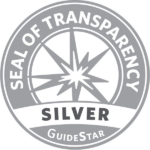Safe Soap: Cheaper & Greener by Avoiding Triclosan
www.mygreendoctor.org
Your office may be wasting money on anti-bacterial soaps, and also hurting your patients and the environment.
We all want “clean”– our hands, bodies & the objects we touch. This has led us to buy cleaning products for the office and home that are “antibacterial ” or “antiseptic”. In the US, the most common antibacterial chemical in soap is triclisan, a chemical which is unnecessary & worrisome.
Triclosan, a chlorinated aromatic compound, is in hundreds of products. While it does have the touted antibacterial effect, Triclosan really is not needed. Hand-washing requires just water, soap, and the friction of rubbing the hands together. The water does not even need to be hot (see My Green Doctor’s blog entry “Turn off your hot water heater!”) Fancy, strong chemicals are a waste. The FDA tells us that there is no evidence that “Triclosan in antibacterial soaps provides any benefit over washing with regular soap and water.”
The health concerns are such that medical peers urge physicians and patients to avoid this product (American Medical Association in 2012, The Endocrine Society in 2009). The recommendations of these physicians are that we use plain soap and water, or employ alcohol-based hand cleansers.
What is worrisome about Triclosan comes from non-human studies and from environmental surveillance data. Triclosan is an endocrine modulator that decreases sperm counts in male rats and causes early puberty in females. Fish exposure results in defective swimming. There are concerns about effects on immune function. Pervasive use of Triclosan and other antibacterial chemicals may contribute to bacterial antibiotic resistance. Finally, there is the theoretical issue that Western societies are becoming too clean and failing to expose the immune systems of our children to bacterial chemical signals that are needed to create the balanced immunity for healthy immune surveillance in adulthood, leading to increased incidences of allergy, autoimmunity and perhaps cancer.
Human exposure to antibacterial chemicals has become pervasive. They are in soaps, but also in toothbrushes, mouthwashes, toys, clothing and shower curtains, with the intention to decrease the growth of bacteria and fungi. In one survey, scientists found Triclosan in the urine of 45% of Americans tested. No surprise then to find it in rivers, lakes and farm fields.
The Endocrine Society determined in 2009, “even if some health effects are not fully proven scientifically, taking precautions is wise.” It urged consumers to avoid Triclosan, especially if they were pregnant or had small children. Synonyms and chemical relatives to look for on product labels are: CH-3565, Microban® Additive B, Irgasan®, DP 300, PG 60, Biofresh®, Lexol-300, Ster-Zac, Cloxifenolum, and Triclocarban. One major manufacturer has taken notice: Triclosan is not in Johnson & Johnson baby products and is being phased out of their other products.
The bottom line comes from an expert: “To me it looks like the risks outweigh any benefit associated with these products right now,” said Allison Aiello, professor at the University of Michigan’s School of Public Health. “Safe cleaning should include the minimal use of chemical, saving money and perhaps lives.
Want to do more? Print out this blog and leave it in the waiting room for your patients.
Want to know more?
www.endocrine.org/endocrine-press/scientific-statements
www.triclosansideeffects.com
www.crestprohealth.com Crest Pro Health is Triclosan-free
en.wikipedia.org/wiki/Triclosan





